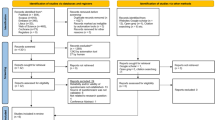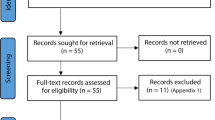Abstract
Data sources
PubMed, Scopus, Web of Science and Google Scholar databases. Websites of scientific societies of dental traumatology, paediatric dentistry, endodontics, oral-maxillofacial surgery and World Health Organization and the US Centres for Disease Control and Prevention were searched. There were no language restrictions, but the search was limited to the years 1996-2016.
Study selection
Observational studies reporting proportions of individuals with at least one TDI (prevalence) and who developed TDI (incidence rate) were considered. Data from any setting were eligible but those from emergency and traumatology services, where TDI frequency could be artificially higher, were excluded.
Data extraction and synthesis
Data were extracted or calculated by one author and checked by the remaining authors. Study quality was assessed with an adapted version of the Newcastle-Ottawa scale (NOS) for disease frequency studies. Poor quality studies (scores 0-2) were excluded from the analysis. Prevalence rates for the permanent dentition, primary dentition and in 12-year-olds, incidence rate to any tooth for any age, male-to-female prevalence ratio (PR) in 12-year-olds, with 95% confidence intervals (95 CIs), were extracted/calculated. Study quality, Z-score distribution, funnel plot symmetry analysis, between-study heterogeneity, sensitivity and subgroup analyses were performed.
Results
No disease registries of population surveys covering at least 10,000 people were identified. One hundred and fifty-two studies were included covering more than one purpose, 102 related to TDI prevalence in permanent teeth and 46 to prevalence in primary teeth, with 42 for TDI prevalence among 12-year-olds while 11 considered TDI incidence rate. Based on data from 268,755 individuals (age range 7-98 yrs; median 13.8yrs) the global estimate of pooled prevalence for TDI in permanent teeth = 15.2% (95% CI, 13.0%-17.4%). For primary teeth the global TDI prevalence = 22.7% (95 % CI, 17.3%-28.7%) based on 59,436 individuals. The prevalence in 12-year-old children = 18.1% (95% CI 15.3%-21.0%) based on 33,829 individuals. There was no difference between the incidence rates between permanent and primary teeth, with the global TDI rate being estimated at 2.82 events per 100 persons per year (95% CI, 2.28-3.42) based on 233,480 individuals. Using the 2016 World population approximately 900 million people had at least one TDI and approximately 180 million children had at least one TDI in their primary teeth.
Conclusions
This study shows that more than one billion living people have had TDI. TDI is a neglected condition which could rank fifth if it was included in the list of the world's most frequent acute/chronic diseases and injuries.
Similar content being viewed by others
Commentary
The mouth accounts for as little as 1% of the total body area but accounts for about 5% of bodily injuries.1 Data from the 2013 Children's Dental Health Survey conducted in England, Wales and Northern Ireland found an overall prevalence of TDI to permanent incisors of 9%.2 The aim of this review was to provide a reliable global estimate of the prevalence and incident rates of traumatic dental injuries (TDIs).
As the authors highlight the methodology for the Global Burden of Diseases (GBD) studies included data from disease registries, population surveys and healthcare facility data not merely epidemiological studies. A very broad search strategy has been used to identify potential studies for inclusion in the review but there are no disease registers or population surveys covering at least 10,000 people for TDI as recommended by the GBD. Consequently, epidemiological studies provide the majority of the information used for this review as healthcare facility data are considered unreliable so not considered.
The included studies covered all the WHO regions and 39 counties globally with Brazil, India and Turkey having the most representation. Study quality was assessed using a version of the Newcastle-Ottawa scale adapted for disease frequency studies. Quality was considered fair to good for scores ≥3, and all the included studies scoring between 3-5.
Overall a good methodological approach has been taken with this review with the authors discussing some of the main issues with this type of review. These not only concern the quality of the included primary studies but also their world representativeness. Diagnostic bias can be an issue in disease frequency studies but for TDI diagnosis for most injuries is straightforward. However, classification can be more problematic as the authors highlight the existence of fifty distinct classification systems,3 although almost 50% of the included studies used the Andreasen's/WHO classification.4
Despite a number of problems with the primary data which have been clearly discussed by the authors this well conducted review provided us with a main global prevalence estimate of TDI between 13.0%-17.4%. They were also able to estimate that males were 34%-52% more likely to develop TDI than females [prevalence ratio 1.43 (95% CI 1.34-1.52)]. In addition based on the world population in 2016 it estimates that approximately 900 million individuals had had at least one TDI of any kind to permanent teeth, pointing out that based on this data TDI would rank fifth if it were included in the list of the main chronic diseases and injuries by the GBD study 2015, after caries, headache, anaemia and hearing loss.5 This would place TDI above periodontal disease and severe tooth loss.
This review very helpfully highlights the often neglected issue of traumatic dental injuries and reinforces the need for appropriate prevention interventions emergency care and ongoing management programmes for this common problem.
References
Petersson EE, Andersson L, Sörensen S . Traumatic oral vs non-oral injuries. Swed Dent J 1997; 21: 55–68.
Blokland A, Watt RG, Tsakos G, Heilmann A . Traumatic dental injuries and socioeconomic position – findings from the Children's Dental Health Survey 2013. Community Dent Oral Epidemiol 2016; 44: 586–591.
Feliciano KM, de França Caldas A Jr. A systematic review of the diagnostic classifications of traumatic dental injuries. Dent Traumatol 2006; 22: 71–76.
Andreasen JO, Andreasen FM . Classification, etiology and epidemiology. Textbook and color atlas of traumatic injuries to the teeth. Copenhagen: Munksgaard; 1994. p. 151–216.
GBD 2015 Disease and Injury Incidence and Prevalence Collaborators. Global, regional, and national incidence, prevalence, and years lived with disability for 310 diseases and injuries, 1990-2015: a systematic analysis for the Global Burden of Disease Study 2015. Lancet 2016; 388: 1545–602.
Author information
Authors and Affiliations
Additional information
Address for correspondence: Stefano Petti, Department of Public Health and Infectious Diseases, Sapienza University, Rome, Italy. E-mail: stefano.petti@uniroma1.it
Petti S, Glendor U, Andersson L. World traumatic dental injury prevalence and incidence, a meta-analysis-One billion living people have had traumatic dental injuries. Dent Traumatol 2018; 34: 71–86. doi:10.1111/edt.12389. Review. PubMed PMID: 29455471.
Rights and permissions
About this article
Cite this article
Richards, D. One billion people have experienced a traumatic dental injury. Evid Based Dent 19, 34–35 (2018). https://doi.org/10.1038/sj.ebd.6401297
Published:
Issue Date:
DOI: https://doi.org/10.1038/sj.ebd.6401297
This article is cited by
-
Traumatic dental injuries over an 8-year period at a German dental center: a retrospective overview and cross-sectional analysis
International Journal of Implant Dentistry (2023)



